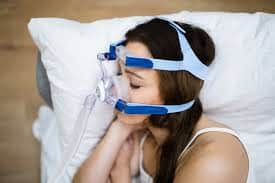
If you’ve ever woken up to that faint hiss of escaping air, or noticed your mask sliding just enough to break your sleep, you’re not alone. CPAP mask leaks are one of the most common frustrations for people who rely on therapy for sleep apnea. It’s annoying, but it’s also telling.
Those tiny leaks often say more about your CPAP mask fit than you might think.
Getting a good seal isn’t just about comfort — it’s the key to keeping your airway open through the night. When air escapes, your CPAP machine can’t maintain the right pressure. The result? Restless nights, dry mouth, and that familiar “still tired” feeling, even after hours in bed.
Why CPAP Mask Leaks Happen — And What They’re Telling You
Here’s the thing: no one’s face is the same. Our noses, cheeks, and sleeping habits all play a role in how well a mask seals. Over time, even a perfectly fitted mask starts to wear down. Cushions lose their bounce, headgear stretches, and oils from your skin slowly break down the silicone.
When the fit changes, leaks begin. You might not even notice at first — just a small sound, or a puff of air brushing your face. But that’s your therapy pressure slipping away, little by little.
A poor CPAP mask fit means your device is working harder to keep up, and your body isn’t getting the steady airflow it needs to stay in deep, restorative sleep.
Leaks Around the Eyes or Nose Bridge — A Common Sign
If air is blowing up toward your eyes, your mask probably sits too high on your face or the cushion is uneven. This type of CPAP mask leak is more than a nuisance — it can cause eye dryness or irritation overnight.
Try repositioning the mask lower on your nose and gently readjusting the straps. You don’t need to crank them tight — in fact, overtightening often creates leaks by distorting the cushion. For some users, switching to a different style mask or a no-headgear system like the Bleep DreamPort can eliminate this problem altogether.
Mouth Leaks — When You Lose Air Without Realizing It
Many CPAP users breathe through their mouth while sleeping, especially if their nose gets stuffy. That’s when mouth leaks show up — and they can undo your entire night’s therapy. You’ll know it’s happening if you wake up with a dry mouth or sore throat.
If that sounds familiar, a chin strap or full-face mask may help. But if full-face masks feel too heavy, newer adhesive systems (like DreamPort) seal directly under the nose and allow you to breathe naturally without the bulk.
Side or Chin Leaks — The Result of Movement
If you sleep on your side or toss around, you may notice leaks along the cheek or chin. This kind of leak usually means your mask isn’t holding its position while you move. When air escapes, your CPAP therapy can lose its consistency — and you’ll likely wake up several times through the night.
To fix this, fit your mask while lying down, not sitting up. That’s how you’ll wear it in real life. Loosen, then tighten the straps until it feels secure but comfortable. A soft pillow or hose holder can also help keep your tubing from tugging your mask while you sleep.
When the Mask Itself Is the Problem
Even with the perfect fit, a worn or dirty mask can still leak. Silicone cushions eventually lose their flexibility and can’t seal properly against the skin. Oils from your face build up over time and form a thin barrier that weakens the grip.
Cleaning your mask daily with mild soap and warm water can make a real difference. Replace your cushion every few months — and your whole mask about once a year. Think of it as maintaining a piece of medical equipment, not just a sleep accessory.
How to Test Your CPAP Mask Fit at Home
A simple way to check your fit is to turn on your machine and lie down in your usual sleeping position. Breathe normally, move a little, and listen. If you hear or feel air escaping, note where it’s coming from. Adjust the straps lightly — not forcefully. The best seal is snug but soft.
If common CPAP leaks persist despite trying different positions and cushion sizes, it’s probably time to explore a new mask type. Nasal pillows, under-nose designs, or DreamPort systems can make a huge difference if you’ve struggled with standard headgear.
Why Fixing CPAP Leaks Matters More Than You Think
Some users shrug off a little hiss or small leak, thinking it’s no big deal. But over time, it adds up. Your CPAP machine may record fewer effective therapy hours, and your body may slip back into apnea events without you knowing it. That’s when daytime fatigue and headaches creep back in.
Fixing common CPAP leaks doesn’t just make the night quieter — it restores your therapy’s full power. And once you’ve experienced a night with zero leaks and steady airflow, you’ll realize how much difference a properly fitted mask really makes.
Final Thoughts
A well-fitted CPAP mask should feel secure but never suffocating. If you’re constantly adjusting, waking up dry, or hearing air hiss in the dark, something’s off — but it’s fixable. With the right adjustments, regular cleaning, and perhaps a switch to newer technology, you can finally enjoy the restful, uninterrupted sleep you’ve been aiming for.
Sleep shouldn’t feel like a struggle. A quiet, leak-free night is absolutely possible — and it starts with understanding what your CPAP mask is trying to tell you.
